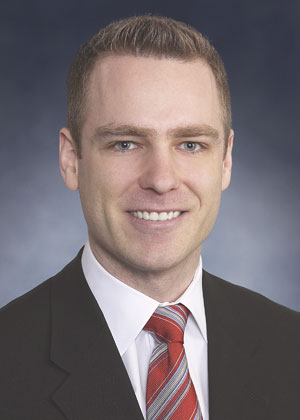The Court of Appeal has reaffirmed Superior Court Justice Margaret Eberhard’s move to overrule a jury verdict last year in a decision that marks the first time it has considered a case dealing with Rule 52.08 of the Rules of Civil Procedure in 11 years.

The rule allowing that to happen arises very rarely at the Court of Appeal, a fact that Eberhard hinted at in her June 2010 judgment.
“Indeed nothing could jangle more profoundly against the accustomed role of a trial judge sitting with a jury than to replace their findings with one’s own view of the facts or set aside their verdict where there was some evidence to support it,” she wrote in
Salter v. Hirst.
“This is so deeply ingrained in the administration of justice as we value it and the jury system as we respect it that a trial judge’s disagreement with jury findings, however often or seldom it may occur, is never known.”
The central question raised in the Court of Appeal decision late last month focused on whether or not there was evidence to support the jury’s findings and therefore sufficient grounds for the judge to overturn it.
The case called into question whether there was proper evidence for the jury’s findings that Dr. Jason Hirst was legally responsible for causing George Salter’s paralysis and that his actions contributed directly to it.
It also raised the issue of whether Eberhard was correct in using Rule 52.08 to issue a new verdict overturning the jury’s findings against Hirst.
“The authorities interpreting this rule confirm that the trial judge is required to dismiss the action pursuant to Rule 52.08, despite the jury’s verdict, where there is no evidence on an essential element of the plaintiff’s claim,” says lawyer Christopher Hubbard of McCarthy Tétrault LLP.
“As a result, this rule may be invoked in any jury case in which there is no evidence on an essential element of the plaintiff’s claim. However, the nature and effect of the rule is only considered by the Court of Appeal if it is invoked at the trial stage and the issue is appealed.”
Hubbard, who represented Hirst, notes he expects the rule often arises at the trial stage but says this is the first time the Court of Appeal has considered a case dealing with it in 11 years.
In Salter, the Court of Appeal found that while the reports of two experts during the trial had established that one of the doctors could have conducted surgery within the six-hour window of opportunity to prevent Salter’s later paralysis, “the appellants led no evidence to show that the correct diagnosis likely would have been made and successful treatment likely would have been completed before the close of the window of opportunity had Mr. Salter been transferred earlier.”
The case raises important questions, according to Salter’s lawyer. “The case is significant in that it begs the question: how far does a plaintiff have to go to prove causation?” says personal injury lawyer Adam Little.
“The Court of Appeal, like the trial judge below, focused on the distinction between what would have happened had the patient been transferred earlier and what could have happened.
The problem with that is it is impossible to prove something that did not actually happen. A fairer way to consider the issue is: what should have happened?”
Hubbard notes the evidence during the initial case established that Salter was suffering from two medical conditions that were difficult to diagnose due to their nature and exceeding rarity.
To avoid the loss of mobility in Salter’s legs, surgery had to take place within a very small window of time. But the trial judge agreed there was no evidence to prove whether or not this would have occurred but for Hirst’s actions.
“This case is also important because it confirms a number of important principles which govern the determination of causation in negligence cases, most importantly when inferences of causation can and cannot be made,” says Hubbard. “There must be a proper evidentiary foundation from which to draw inferences of causation.”
Hubbard also notes the court can’t bridge a gap in the evidence on whether or not a particular outcome was more likely than not to occur through common sense in cases where the inference involves medical or scientific evidence that’s not in the record.
“While the robust and pragmatic approach may be taken to evidence of causation in certain circumstances, as the courts have repeatedly confirmed, it is not a substitute for evidence,” says Hubbard.
The Court of Appeal decision could mean plaintiffs will now find themselves in an uphill battle in trying to prove what would have happened in delayed treatment cases, according to Little.
“It’s a very rare case because the jury found in favour of the plaintiff against Dr. Hirst and then the trial judge overruled the jury’s verdict,” he says. “This does not happen very frequently because in Canada we hold the decisions of juries in the highest regard.”
The last time the Court of Appeal heard a case where the trial judge overruled a jury verdict based on Rule 52.08 was in May 2000 in Lang v. McKenna. According to the appeal court’s judgment, the original jury verdict was correct because it could make inferences from the evidence in the case.

 The rule allowing that to happen arises very rarely at the Court of Appeal, a fact that Eberhard hinted at in her June 2010 judgment.
The rule allowing that to happen arises very rarely at the Court of Appeal, a fact that Eberhard hinted at in her June 2010 judgment.